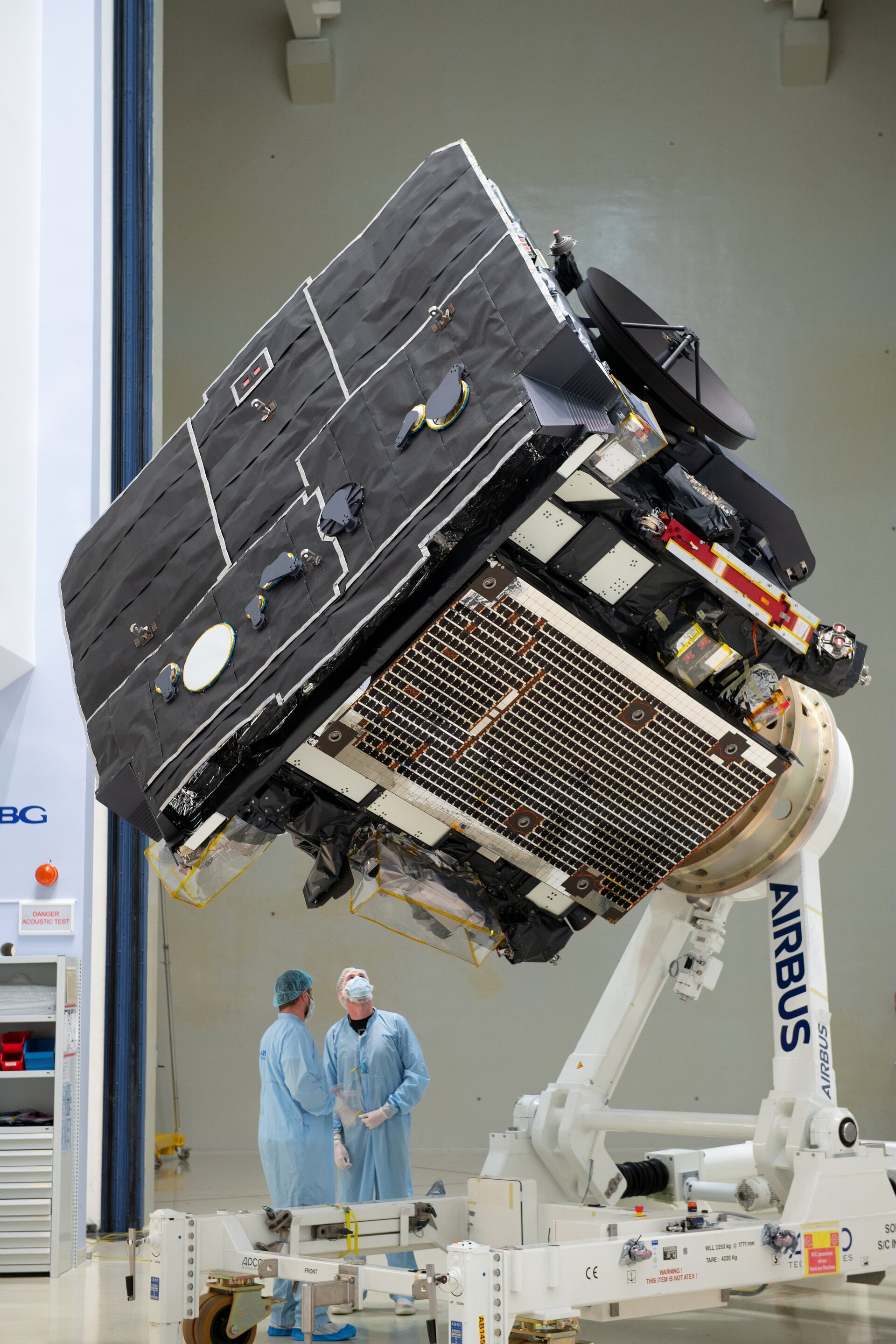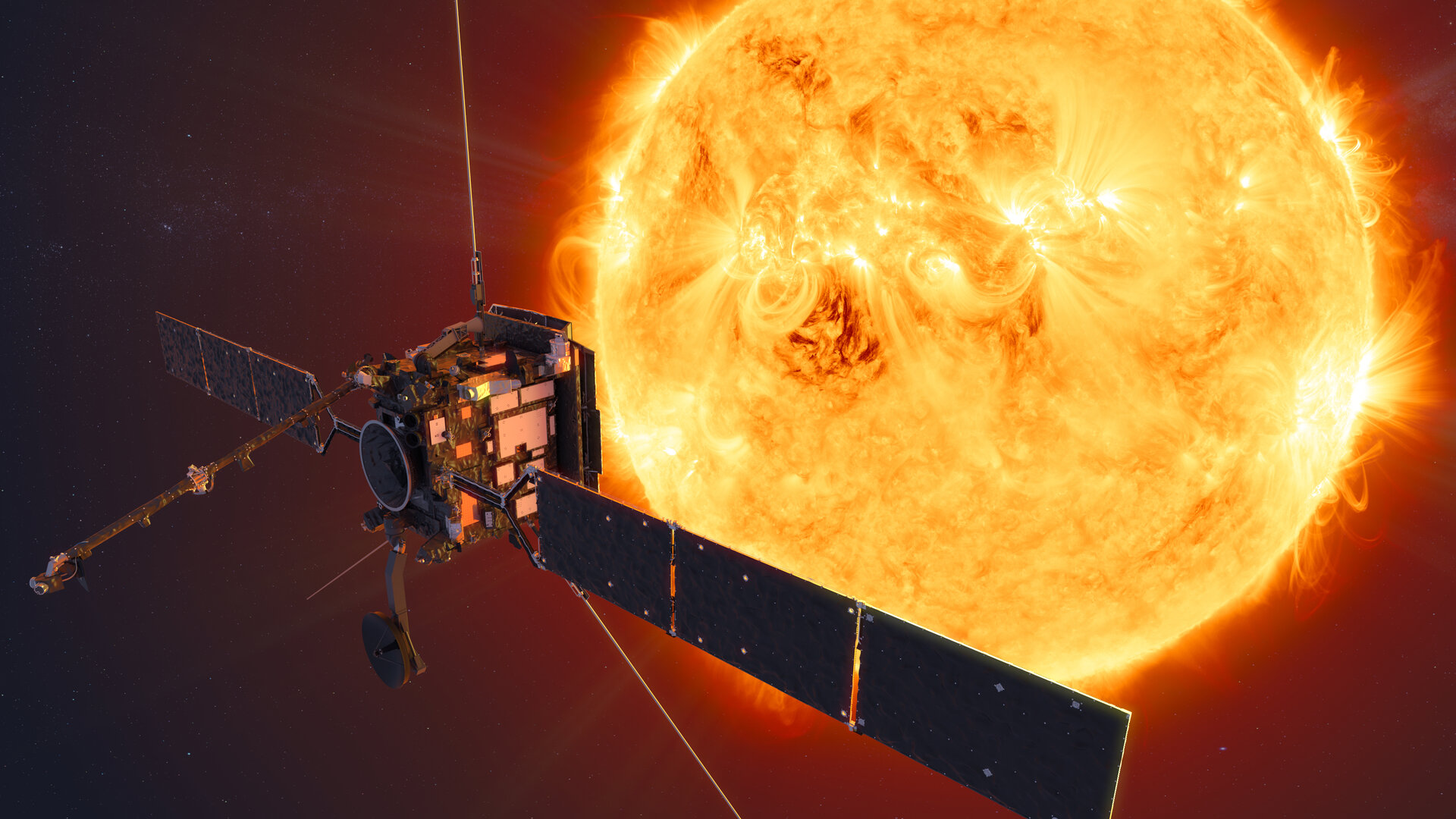Global S&T Development Trend Analysis Platform of Resources and Environment
| Solar Orbiter ready to depart Europe | |
| admin | |
| 2019-10-18 | |
| 发布年 | 2019 |
| 语种 | 英语 |
| 国家 | 欧洲 |
| 领域 | 地球科学 |
| 正文(英文) | ESA’s Solar Orbiter mission has completed its test campaign in Europe and is now being packed ready for its journey to Cape Canaveral at the end of this month, ahead of launch in February 2020. The spacecraft was on display today for the final time in Europe, at the IABG test centre near Munich, Germany. It was built at Airbus Stevenage, UK, and has spent the last year at IABG undergoing essential testing such as checking deployment mechanisms, and that it can withstand the vibrations of launch, and the thermal extremes and vacuum of space. It has now been declared ready for shipment to the launch site and will travel an Antonov cargo plane on 31 October. 
Once launched it will follow an elliptical path around the Sun, at its closest bringing it within the orbit of Mercury, just 42 million kilometres from the Sun. As such, Sun-facing parts of the spacecraft have to withstand temperatures of more than 500ºC – due to solar radiation thirteen times more intense than for Earth-orbiting satellites – while other parts remain in shadow at -180ºC. The mission is essential to learn more about the Sun-Earth connection. We live inside a giant bubble of plasma generated by the Sun that surrounds the entire Solar System, within which we are prey to space weather. Solar Orbiter will provide a deeper understanding as to how activity on the Sun is linked to these solar storms, which can disrupt electrical systems, satellite communications, GPS, and create higher doses of radiation for polar flights and astronauts. “Solar Orbiter is set for answering some of the biggest scientific questions about our star, and its data will help us to better protect our planet from the global challenges of space weather,” says Günther Hasinger, ESA Director of Science. “Thanks to the hard work of our teams building and testing this inspiring space mission, we’ve reached an important milestone today in Europe, and the spacecraft will now be readied for its final phase of pre-launch preparations at Cape Canaveral.” 

Solar Orbiter's journey around the Sun
Access the video Solar Orbiter will launch on a NASA-provided Atlas V 411. The launch is currently scheduled in the early hours of 6 February (UTC). Once in space, and over the course of several years, it will use the gravity of Venus and Earth to raise its orbit above the poles of the Sun, providing new perspectives on our star, including the first images of the Sun’s polar regions. Its complementary suite of instruments means it will be able to study the plasma environment locally around the spacecraft, and collect data from the Sun from afar, connecting the dots between the Sun’s activity, and the space environment in the inner Solar System. Solar Orbiter is an ESA mission with strong NASA participation. The prime contractor is Airbus Defence and Space in Stevenage, UK. It follows in the legacy of missions such as Ulysses (1990-2009) and SOHO (1995-present) and will also provide complementary datasets to NASA’s Parker Solar Probe that will allow more science to be distilled from the two missions than either could achieve on their own. For more information please contact:
ESA Newsroom and Media Relations |
| URL | 查看原文 |
| 来源平台 | European Space Agency |
| 文献类型 | 新闻 |
| 条目标识符 | http://119.78.100.173/C666/handle/2XK7JSWQ/216094 |
| 专题 | 地球科学 |
| 推荐引用方式 GB/T 7714 | admin. Solar Orbiter ready to depart Europe. 2019. |
| 条目包含的文件 | 条目无相关文件。 | |||||
| 个性服务 |
| 推荐该条目 |
| 保存到收藏夹 |
| 查看访问统计 |
| 导出为Endnote文件 |
| 谷歌学术 |
| 谷歌学术中相似的文章 |
| [admin]的文章 |
| 百度学术 |
| 百度学术中相似的文章 |
| [admin]的文章 |
| 必应学术 |
| 必应学术中相似的文章 |
| [admin]的文章 |
| 相关权益政策 |
| 暂无数据 |
| 收藏/分享 |
除非特别说明,本系统中所有内容都受版权保护,并保留所有权利。
修改评论